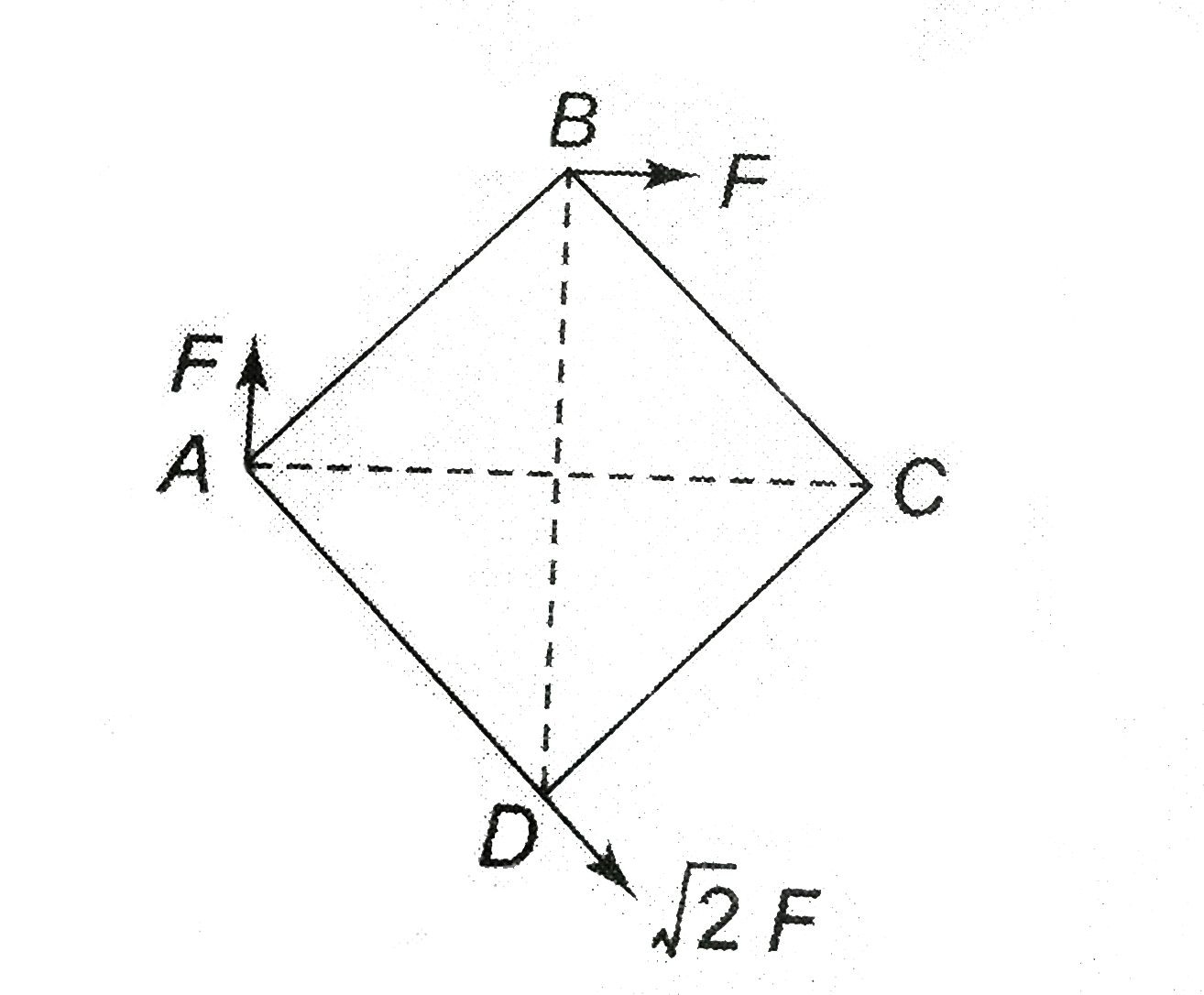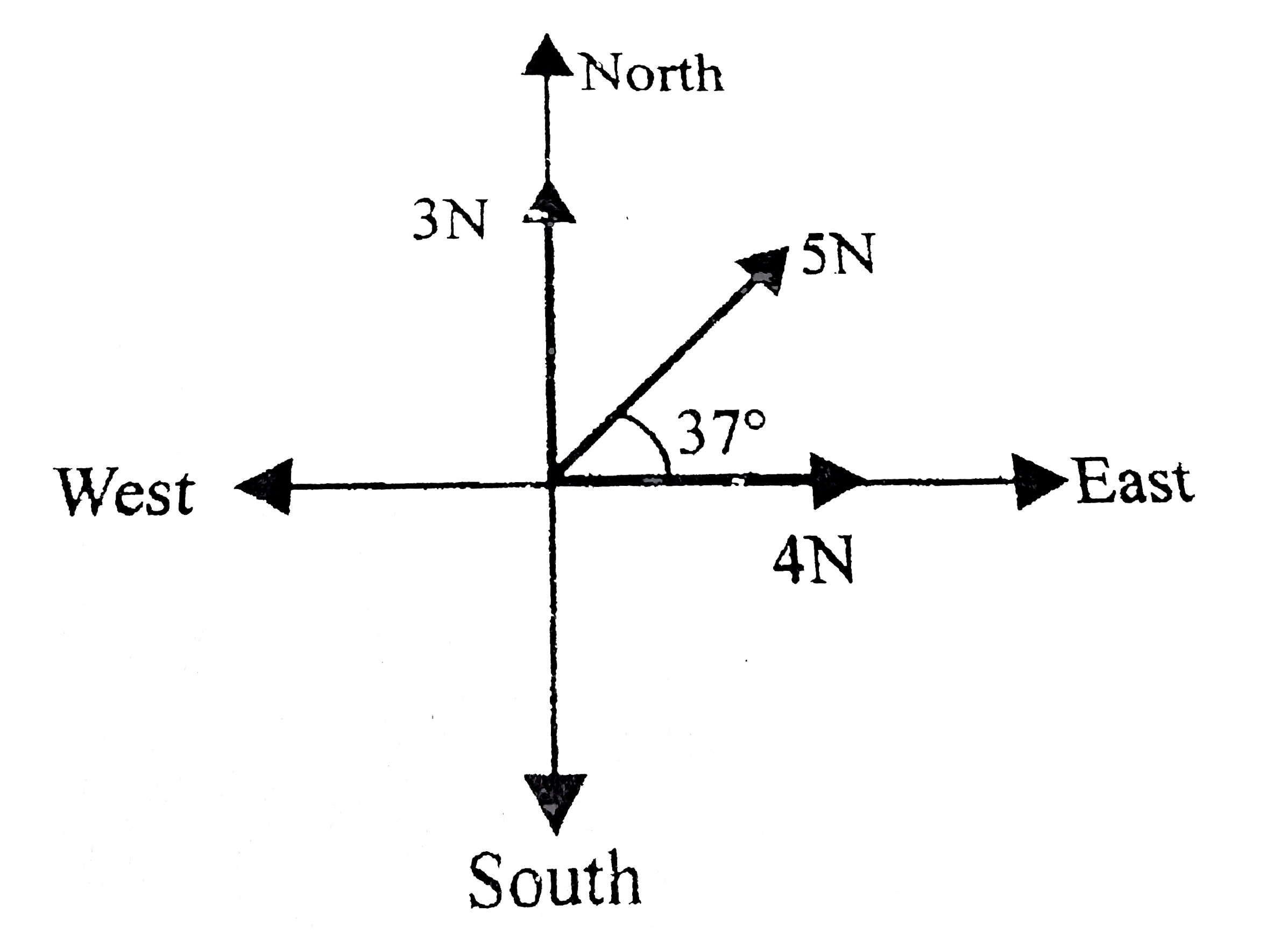Find the magnitude and direction of resultant of Co-planar forces shown in fig.
Using the equation of equilibrium∑H = –20 + 10 + 10√2 cos 45º∑H = 0 ...i∑V = –10 + 10√2 sin 45º∑V = 0 ... iiSince ∑H and ∑V both are zero but in non concurrent forces system the body is in equilibrium when ∑H = ∑V = ∑M = 0So first we check the value of ∑M if it is zero then body is in equilibrium and if not then that moment is the resultant. Taking moment about point A ∑MC = 0 = –10 × 20 –10 × 20 = – 400 KN–cmSince moment is not zero i.e. Body is not in equilibrium Hence the answer is M = 400 KN–cm Anticlockwise
Related Solutions
Find the magnitude of the resultant of shown forces :-
 View Solution
View SolutionCalculate the magnitude and the direction of the resultant force acting on an object shown in the picture.
View SolutionState and explain the law of parallelogram of forces. Find the direction and magnitude of resultant.
View SolutionFind the magnitude, direction and position of the resultant, if the forces in the above problem are unlike ?
View SolutionFor the situation shown, what will be the magnitude of the minimum force (in Newton) that can force a vector applied to the force in any direction so that the resultant force is along the east direction.
View SolutionThree force are applied to a square plate as shown in the figure. Find the magnitude, direction and point of application of the resultant force if this point is taken on the side .
 View Solution
View SolutionTwo objects are moving along the directions as shown in (Fig. 5.77). Find the magnitude and direction of the relative velocity of .
 , View Solution
, View SolutionTwo objects A and B are moving along the directions as shown in (Fig. 5.77). Find the magnitude and direction of the relative velocity of B w.r.t. A . ,
View SolutionThree co-planar vectors ( x-y plane ) having magnitude 3sqrt(2),6,10 are shown in the figure. Find the componenent of resultant of three vectors along the x axis as shown. .
View SolutionThree co-planar vectors ( x-y plane ) having magnitude 3sqrt(2),6,10 are shown in the figure. Find the componenent of resultant of three vectors along the x axis as shown. .
View SolutionTwo forces of each magnitude 5N are inclined to each other at 60^@ .Find the magnitude and direction of their resultant.
View SolutionTwo forces each of magnitude 5N are inclined to each other at 60^@ . Find the magnitude and their direction of their resultant.
View SolutionThe resultant of two forces of magnitude 12N and 3N on a body is 13.74N. Find the angle between the two. What is the direction of the resultant force w.r.t. 12N force?
View SolutionFor shown situation, what will be the magnitude of minimum force in newton that can be applied in any direction so that the resultant force is along east direction?
 View Solution
View SolutionFor shown situation, what will be the magnitude of minimum force in newton that can be applied in any direction so that the resultant force is along east direction?
 View Solution
View SolutionFor shown situation, what will be the magnitude of minimum force in newton that can be applied in any direction so that the resultant force is along east direction?
 View Solution
View SolutionFor the circuit shown in figure the direction and magnitude of the force on PQR is :
View SolutionFor the circuit shown in figure the direction and magnitude of the force on is :
 View Solution
View SolutionFour forces are acting on a body as shown in figure. The magnitude of resultant of the forces is
View SolutionTwo forces 12N and 5N are acting at right angles to each other. Find the magnitude and direction of the resultant force.
View Solution
